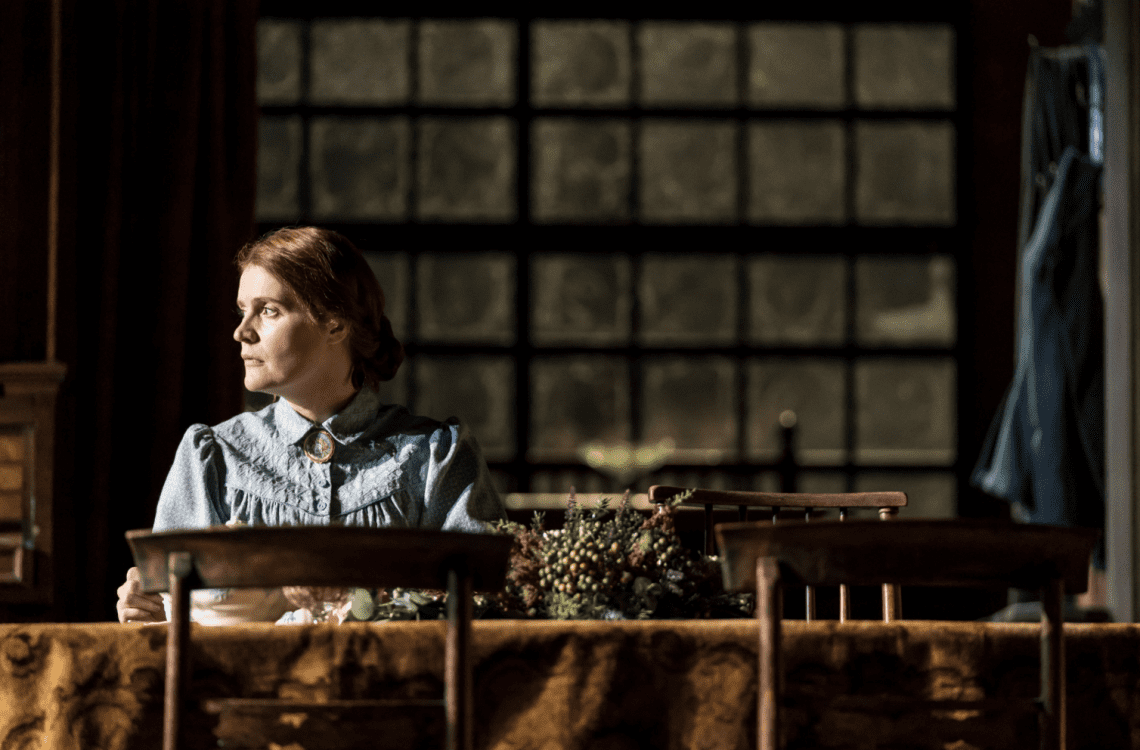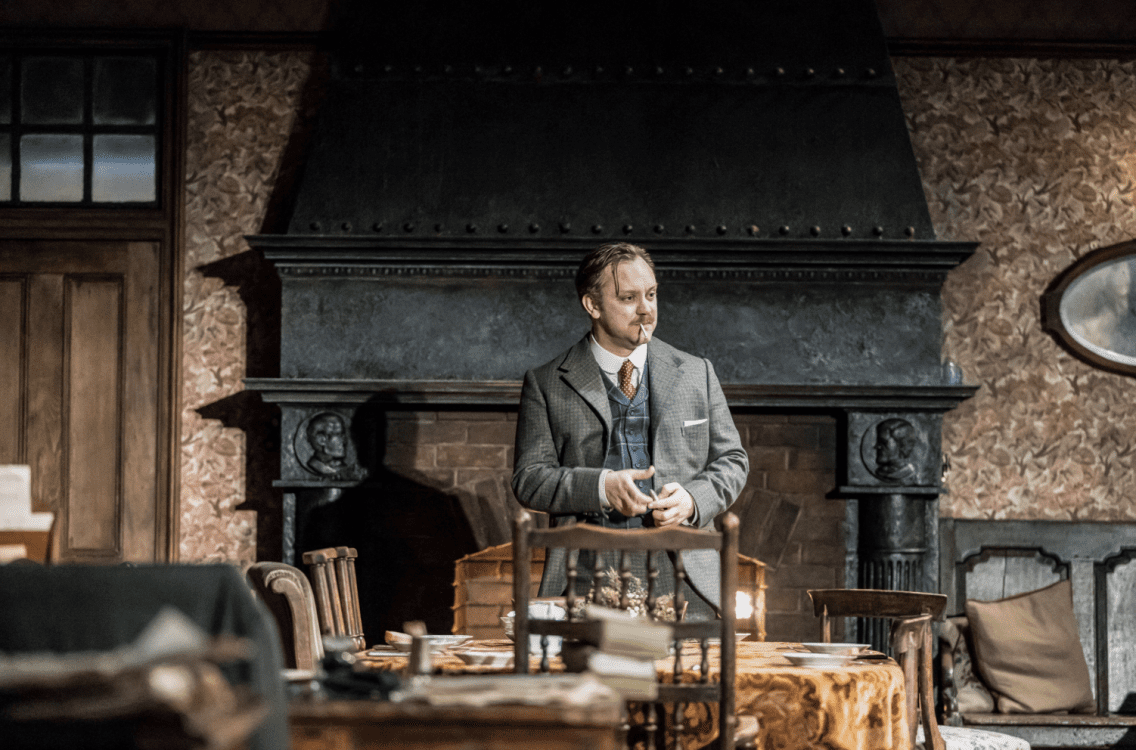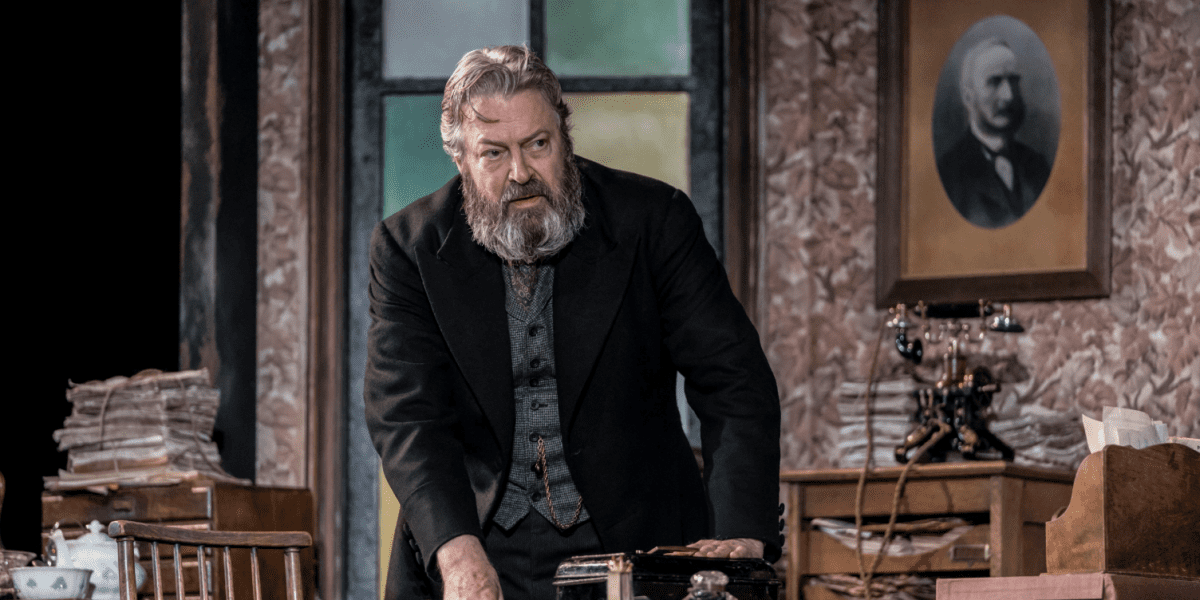Rutherford and Sons is a powerful deconstruction of how the intersection of class and patriarchy enabled weak men’s dominion over women, no matter their status or intellect, in the Edwardian era. Originally performed in 1912, while it may have been of its time, those themes still resonate far too powerfully today.  The action of the play takes place almost exclusively in the parlour of the Rutherford’s large middle class home in the North East of England. John Rutherford is the powerful family patriarch and owner of the glass factory that is the main source of employment in the local town. His father though, started as a pot man, and it has been his determination to rise above the station to which his father was born that has led to much of the dysfunction in the family. One son has rejected his life for one of the priesthood, one is something of a dilettante, who may have accidentally stumbled onto a good idea but has few of the skills required to capitalise on it. His daughter has it worst – stuck in a life that both bores and traps her, lonely until she starts a love affair with a man beneath her station whose first loyalty is to her overbearing father.
The action of the play takes place almost exclusively in the parlour of the Rutherford’s large middle class home in the North East of England. John Rutherford is the powerful family patriarch and owner of the glass factory that is the main source of employment in the local town. His father though, started as a pot man, and it has been his determination to rise above the station to which his father was born that has led to much of the dysfunction in the family. One son has rejected his life for one of the priesthood, one is something of a dilettante, who may have accidentally stumbled onto a good idea but has few of the skills required to capitalise on it. His daughter has it worst – stuck in a life that both bores and traps her, lonely until she starts a love affair with a man beneath her station whose first loyalty is to her overbearing father.
Rutherford dominates at home as he clearly does at the factory through iron discipline and emotional withdrawal. Roger Allam is a superb actor with the finest line in ironic disbelief you will ever see. It’s pretty much his trademark. And when he gets lines here (even the two words “does he?”) where he can deliver this he is in his element. But what he also demonstrates well here is that Rutherford too is trapped in the prison of his own making. He sees the destruction he is causing to the lives of those around him but is unable to change his behaviour or outlook to stop any of it.
Each scene opens and closes with beautiful English folk music (think the Unthanks) singing songs of and about the North country. The set is lavish and detailed – to the point of having an almost totally unused second set that only exists for the final unspoken scene. The family is well placed in the ‘pulled up by the bootstraps’ camp by many prop and scenery details. The whole production has been well designed to immediately place you both in the home environment, but also to show the cruelty and difficulty of existence in the North Country in December.
My principle criticism of Rutherford and Son was that some of the staging was a bit odd and mannered. It just seemed to occasionally have too much strain to have the actors face the audience which lost the naturalism of the rest of the performances.
My other minor issue was that the play took a while to really get going. The first half was considerably slower than the second. However, once the action started moving it was riveting, and the actors largely put in fine performances – with particular nods going inevitably to Allam, but also to Justine Mitchell as his daughter and Anjana Vasan as the quiet but powerfully clever Mary – his daughter-in-law.
The theme of servitude is central to this play. Employees’ servitude to their bosses and the lower class’ servitude to their masters more generally, as well as women’s servitude to men. The parallels drawn are fascinating not least because they still exist in society today, though we are far more likely to ignore their more informalised nature now. So in many ways, it is in reviving this play of our semi-recent past that helps us question how much has really changed. That makes this a timely and fascinating revival and well worth seeing.

